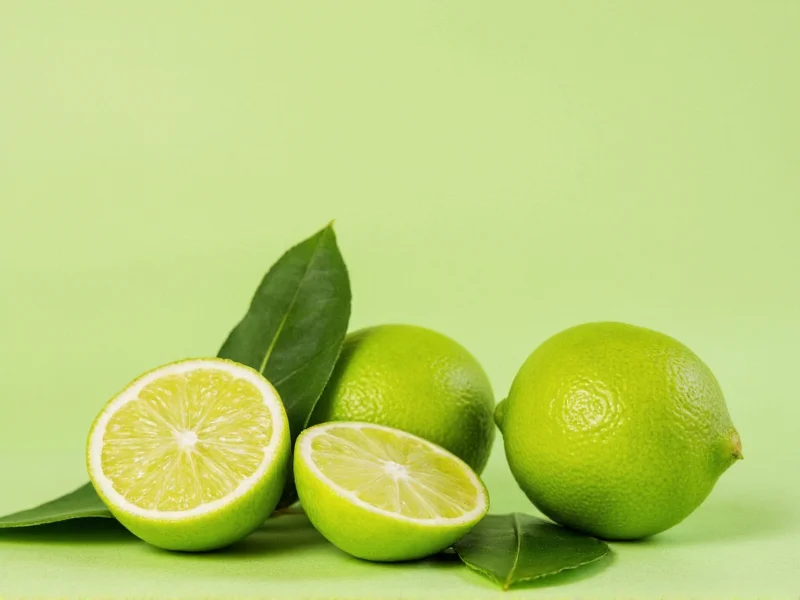Understanding lime to lime juice conversion is essential for precise cooking and baking. The exact yield varies based on several factors, but having reliable measurements ensures your recipes turn out perfectly every time. This guide provides accurate equivalents, practical extraction tips, and helpful conversion references for both home cooks and professional chefs.
Factors Affecting Lime Juice Yield
The amount of juice you get from limes isn't consistent across all fruits. Several variables influence your final yield:
- Lime variety: Persian (common grocery store limes) typically yield more than Key limes
- Ripeness: Fully ripe limes contain more juice than underripe ones
- Temperature: Room temperature limes yield 20-30% more juice than cold limes
- Extraction method: Hand squeezing vs. mechanical juicers affects final volume
- Size: "Medium" limes range from 2-3 inches in diameter with significant juice variation
Lime Juice Conversion Chart
| Lime Measurement | Juice Equivalent | Real-World Application |
|---|---|---|
| 1 medium lime (2.5-3" diameter) | 2 tablespoons (1 fl oz) | Ceviche for 2 servings |
| 1 large lime (3+" diameter) | 3 tablespoons (1.5 fl oz) | Margarita cocktail |
| 4-5 medium limes | 1 cup (8 fl oz) | Limeade for 4 servings |
| 3 Key limes | 2 tablespoons | Traditional Key lime pie |
| 1 pound limes (about 6 medium) | 10-12 tablespoons (5-6 fl oz) | Batch cocktail preparation |
Maximizing Your Lime Juice Yield
Professional chefs use these proven techniques to extract every drop of juice:
- Roll before cutting: Firmly press and roll limes on a hard surface for 15-20 seconds to break down internal membranes
- Microwave briefly: Heat whole limes for 10-15 seconds to loosen juice vesicles
- Use proper tools: Citrus reamers extract 25% more juice than handheld squeezers
- Cut correctly: Slice crosswise rather than lengthwise for maximum juice release
- Squeeze immediately: Juice oxidizes quickly, losing both volume and flavor
When Precision Matters in Recipes
Not all recipes require exact lime juice measurements. Understanding when precision is critical helps you decide whether to eyeball or measure:
Measure precisely when:
- Preparing cocktails (especially margaritas and gimlets)
- Making ceviche where acid "cooks" the fish
- Baking where pH affects texture (like soufflés)
- Creating emulsions like mayonnaise or hollandaise
Can estimate when:
- Adding to guacamole or salsa
- Marinating proteins for extended periods
- Preparing large batches of beverages like sangria
Substituting Bottled Lime Juice
While fresh is always best, bottled lime juice works in a pinch. When substituting:
- Use 1:1 ratio for most recipes (bottled juice is typically more concentrated)
- Reduce by 25% in delicate applications like ceviche
- Add a pinch of baking soda to neutralize preservative flavors
- Never use for cocktails where fresh flavor is paramount
Storage Tips for Fresh Lime Juice
Preserve your freshly squeezed juice with these methods:
- Refrigerate in airtight container for up to 3 days
- Freeze in ice cube trays (1 cube = 2 tablespoons) for 4 months
- Add 1% citric acid to extend refrigerated shelf life to 2 weeks
- Never store at room temperature for more than 2 hours
How many limes do I need for 1/2 cup of juice?
You'll need approximately 2-3 medium limes to yield 1/2 cup (4 fluid ounces) of fresh lime juice. For consistent results, roll the limes firmly on a countertop before juicing to maximize extraction.
Does lime size significantly affect juice yield?
Yes, size dramatically impacts yield. A small lime (under 2 inches) may yield only 1 tablespoon, while an extra-large lime (over 3.5 inches) can produce up to 4 tablespoons. Always measure by volume rather than counting limes for recipe accuracy.
Can I substitute lemon juice for lime juice in recipes?
You can substitute lemon juice at a 1:1 ratio in most applications, but expect flavor differences. Lemon juice is less acidic and has a different flavor profile. For Mexican or Thai dishes where lime's distinctive tartness is essential, substitution isn't recommended.
Why does my lime juice measurement never match recipe expectations?
Several factors cause discrepancies: limes may be cold (reducing yield by 20-30%), underripe, or you might be using inefficient extraction methods. Always bring limes to room temperature and roll them firmly before cutting for maximum juice extraction.
How can I tell if a lime has maximum juice content?
Select limes that feel heavy for their size with smooth, thin skin. Avoid those with soft spots or thick, bumpy rinds which indicate less juice. A simple test: gently squeeze the lime - it should yield slightly but feel firm, not hard or mushy.











 浙公网安备
33010002000092号
浙公网安备
33010002000092号 浙B2-20120091-4
浙B2-20120091-4